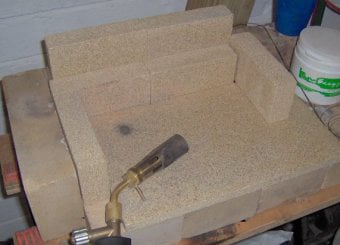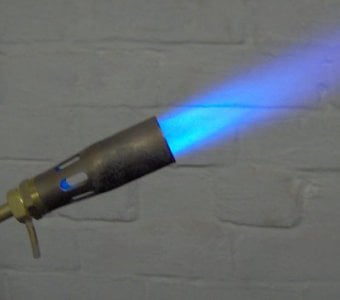For a source of heat, we must discuss the difference between temperature and heat capacity.
Some gas torches, oxyacetylene for example, produce a very hot flame in excess of 3000°C, but the volume of heat is not high. The flame is small and focused. These high temperatures could melt the parent metal if the flame is not used carefully.
For model engineering work, a gas torch will work, but it needs to have sufficient heat capacity. A simple plumber's torch will only do soft soldering. Mapp gas is a better bet or just propane, but with a nozzle of sufficient diameter to create enough heat output. The torch on the right is made by Sievert and connects to a large propane cylinder. This is adequate for most jobs and smaller nozzles can be fitted for detailed work.




